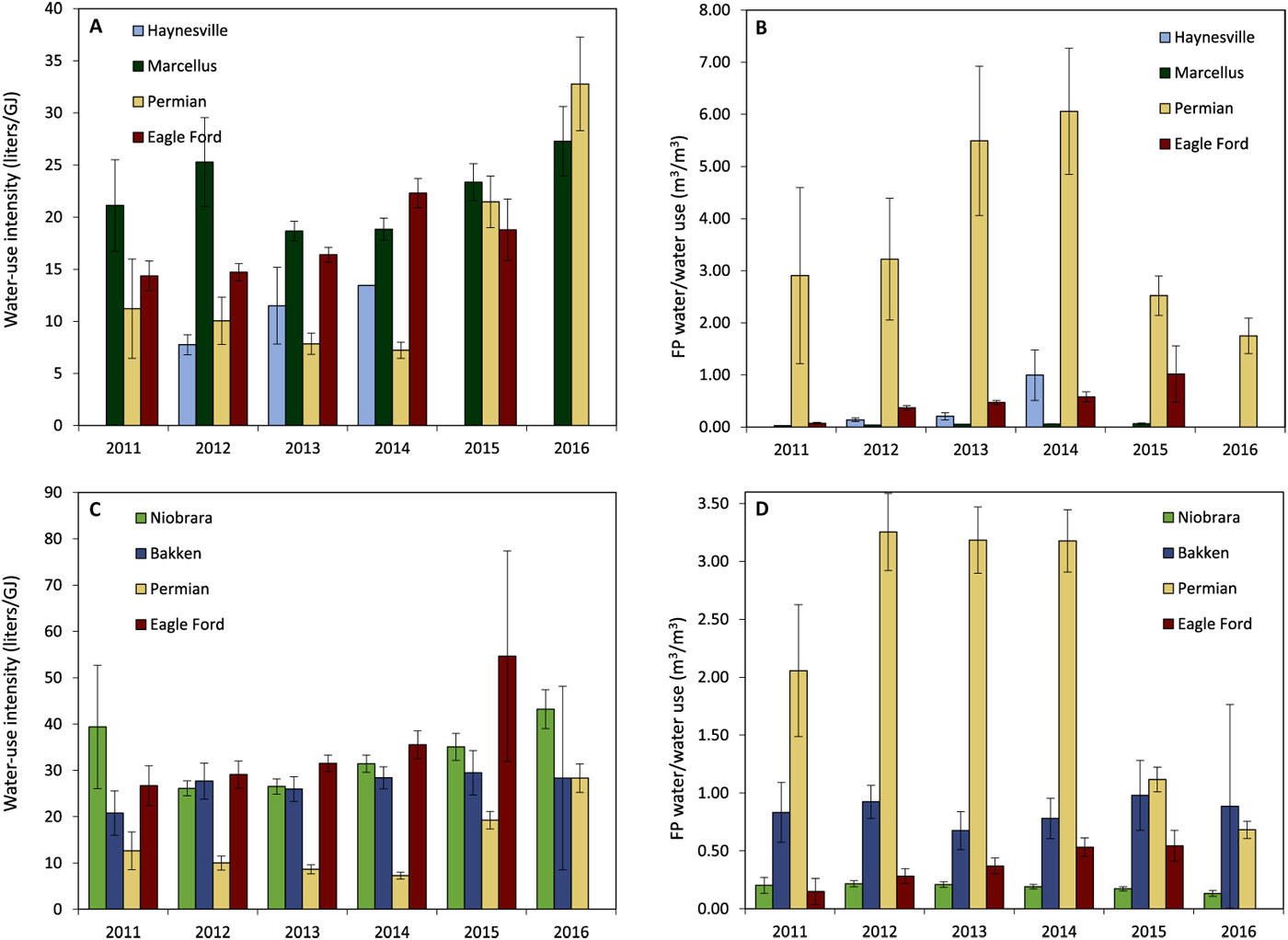For years, the American people have been assured by energy companies that fracking is harmless and doesn’t use more water than other energy sources. The Duke research team that recently put out a new report begs to differ. They examined data across 12,000 wells and five years of operation. Here are key findings from the report and what they mean for our survival.
The Findings
Water is staying trapped in the shale, or if it does re-emerge, isn’t treated:
Only a small fraction of the fresh water injected into the ground returns as flowback water, while the greater volume of FP (flowback and produced) water returning to the surface is highly saline, is difficult to treat, and is often disposed through deep-injection wells.

The amount of water used by fracking has been critically underestimated.
The study finds that from 2011 to 2016, the water use per well increased by as much as 770 percent. In an interview for ThinkProgress, one of the authors of the study explained how early estimates of fracking’s irresponsible use of water had been so skewed:
“Previous studies suggested hydraulic fracturing does not use significantly more water than other energy sources, but those findings were based only on aggregated data from the early years of fracking… After more than a decade of fracking operation, we now have more years of data to draw upon from multiple verifiable sources.”— Avner Vengosh, Duke professor of geochemistry and water quality
The toxic wastewater produced is a much bigger problem than previously understood.
The study found that toxic wastewater produced from fracking had increased up to 1440 percent between 2011 and 2016. There has been no satisfactory practice of water treatment that returns this water to usable condition for humanity — and at this scale, one can reason that fracking is on pace to destroy U.S. water sources and leave us without water for our population’s consumption:
The total water impact of hydraulic fracturing is poised to increase markedly in both shale gas– and oil-producing regions. On the basis of modeling future hydraulic fracturing operations in the United States in two scenarios of drilling rates, we project cumulative water use and FP water volumes to increase by up to 50-fold in unconventional gas-producing regions and up to 20-fold in unconventional oil-producing regions from 2018 to 2030, assuming that the growth of water use matches current growth rates and the drilling of new wells again matches peak production.
What We Do Next Is Critical
Waiting another five years for a new report to bolster this or to show an even bigger spike in fracking’s greedy water consumption is not an option.
“At a time when large parts of our county are suffering through persistent droughts and year-round fire seasons, it’s truly unconscionable that the fossil fuel industry would be allowed to divert vast volumes of water to fracking for oil and gas. The fact that the burning of this oil and gas is driving our climate chaos and intensifying the droughts and fires makes this reality all the more shameful and absurd.” – Seth Gladstone, Food & Water Watch
Organizations like Food & Water Watch and people like you need to double down on our efforts to ban fracking now and to move to 100% renewable energy ASAP. Humanity doesn’t get a do-over on saving our water supply.
Showing your support for a ban on fracking helps persuade Congress.
FULL DUKE UNIVERSITY STUDY ON WATER USAGE IN FRACKING





